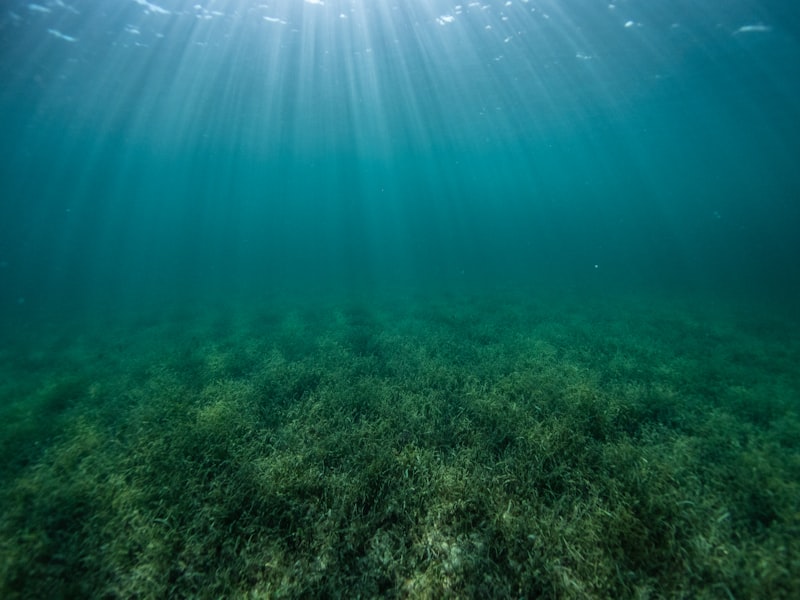Ever wondered if our efforts to protect marine life are making a real difference? Dive into these inspiring marine conservation success stories that prove positive change is happening beneath the waves.
In the waters off the coast of Costa Rica, conservationists have celebrated a remarkable rebound in sea turtle populations. Through dedicated protection of nesting sites and stricter regulations on fishing practices, the once-declining numbers of olive ridley and leatherback turtles have seen a significant resurgence. This success underscores the importance of sustainable fishing and habitat preservation in safeguarding vulnerable marine species.
Closer to home, in the Gulf of Mexico, efforts to restore coral reefs have yielded promising results. Despite facing severe damage from hurricanes and human activity, restoration projects employing innovative techniques such as coral gardening and artificial reef structures have led to the gradual recovery of these vital ecosystems. These efforts not only revive biodiversity but also support local fisheries and tourism, highlighting the interconnectedness of marine conservation and community livelihoods.
Meanwhile, halfway across the world in the Indo-Pacific, community-led initiatives in the Philippines have led to the recovery of endangered dugongs. By establishing marine protected areas and promoting responsible boating practices, local communities have created safe havens where these gentle marine mammals can thrive once again. This success story demonstrates the power of grassroots conservation efforts and the importance of empowering communities to become stewards of their marine environments.
These stories of success remind us that positive change is possible when we prioritize sustainable practices and conservation efforts. By learning from these achievements, we can continue to protect our oceans and ensure a brighter future for marine life and human communities alike.
Reviving Reefs: How Local Initiatives Are Saving Coral Ecosystems
Coral reefs, often referred to as the “rainforests of the sea,” are crucial ecosystems teeming with life and biodiversity. However, these delicate underwater environments face severe threats from climate change, pollution, and unsustainable fishing practices. In recent years, local initiatives have emerged as beacons of hope, actively working to preserve and restore coral reefs worldwide.
Imagine diving into the crystal-clear waters of a tropical paradise, only to discover vibrant coral gardens bustling with colorful fish and other marine creatures. These reefs not only provide habitat for marine life but also protect coastal communities from storm surges and erosion. Yet, due to rising sea temperatures and ocean acidification, many reefs are under immense stress, leading to coral bleaching and widespread ecosystem collapse.
In response to these challenges, passionate individuals and organizations have taken action at the grassroots level. From coastal villages to bustling cities, local communities are implementing innovative conservation strategies. For instance, in the Maldives, community-led marine protected areas (MPAs) restrict harmful activities and promote sustainable tourism, allowing damaged reefs to recover and thrive.
Moreover, education plays a pivotal role in these initiatives. Local schools and community centers often spearhead awareness campaigns, teaching residents about the importance of coral reefs and the actions they can take to protect them. By fostering a sense of stewardship among future generations, these programs ensure long-term sustainability and resilience for coral ecosystems.
Furthermore, partnerships between local stakeholders and scientific experts are driving impactful research and monitoring efforts. By collecting data on reef health and biodiversity, researchers can identify key stressors and implement targeted interventions. This collaborative approach not only enhances scientific knowledge but also empowers communities to make informed decisions about reef management.
From Brink to Bounty: The Remarkable Recovery of Sea Turtle Populations
Decades of dedicated conservation work, supported by governments, NGOs, and passionate individuals, have led to significant strides in protecting sea turtle populations. Strict regulations against poaching and habitat destruction, coupled with innovative conservation practices, have turned the tide for these gentle giants.
One of the key factors in the recovery of sea turtles has been the establishment of protected nesting sites. These sanctuaries provide safe havens where female turtles can lay their eggs without disturbance. By safeguarding these crucial habitats, conservationists have ensured the survival of future generations.
Furthermore, public awareness and education have played a pivotal role. Efforts to inform communities about the importance of sea turtles in marine ecosystems have sparked widespread support for conservation initiatives. Local communities have become guardians of sea turtle nests, actively participating in monitoring and protecting hatchlings as they make their way to the sea.

Technological advancements have also contributed significantly to monitoring and tracking sea turtle populations. Satellite tagging and GPS technology allow researchers to gather crucial data on migration patterns and nesting behaviors. This information is invaluable for crafting effective conservation strategies on a global scale.
As sea turtle populations continue to rebound, their recovery serves as a testament to the power of collective action and environmental stewardship. While challenges persist, the resurgence of these ancient mariners offers hope and inspiration for the future of marine conservation efforts worldwide.
Oceans of Hope: How Marine Sanctuaries Are Thriving Against the Odds
Imagine a bustling underwater city, teeming with life and vibrant ecosystems. Marine sanctuaries serve as crucial refuges for a staggering array of species, from majestic whales to delicate corals. They provide a safe haven where marine life can flourish without the constant threat of human interference.
But their significance extends far beyond mere conservation. These sanctuaries are living laboratories, offering scientists invaluable opportunities to study natural processes and monitor the health of ocean ecosystems. By understanding how these areas thrive, researchers can glean insights into broader ecological patterns and inform conservation efforts worldwide.
Moreover, marine sanctuaries play a pivotal role in climate resilience. As carbon dioxide levels rise and ocean temperatures warm, these protected areas act as buffers against the impacts of climate change. They help maintain biodiversity and preserve genetic diversity within species, enhancing their ability to adapt to changing environmental conditions.
Yet, the journey hasn’t been without challenges. Securing and maintaining marine sanctuaries demands concerted efforts from governments, conservation organizations, and local communities. It requires balancing conservation goals with the socioeconomic needs of coastal populations, ensuring sustainable livelihoods while safeguarding our natural heritage.
Breaking Waves: Innovations in Fishing Techniques that Save Endangered Species
Fishing has long been both a vital industry and a recreational activity across the globe. However, with the alarming decline in various fish populations, especially those categorized as endangered species, innovative approaches to fishing techniques have become imperative. These advancements not only aim to sustain fish stocks but also ensure the survival of species threatened by overfishing and environmental degradation.
One of the groundbreaking innovations in fishing techniques is the development of selective fishing gear. Unlike traditional methods that capture a wide range of marine life indiscriminately, selective gear targets specific species while minimizing bycatch — the unintentional capture of non-targeted species. For instance, modifications in net designs and deployment depths can significantly reduce bycatch, thereby protecting endangered species such as sea turtles, dolphins, and certain types of sharks.
Another promising advancement is the implementation of real-time tracking technologies. These technologies enable fishermen to monitor their catch more effectively, allowing them to make informed decisions about where and when to fish. By integrating GPS and satellite data, fishermen can avoid areas where endangered species are known to congregate during critical periods such as breeding or migration seasons.
Furthermore, the adoption of sustainable fishing practices has gained traction within the industry. Techniques such as circle hooks and biodegradable fishing gear help reduce the impact of fishing activities on marine ecosystems. Circle hooks, for example, are designed to hook fish in the mouth rather than the gut, minimizing injury and increasing survival rates for released individuals. Biodegradable gear, on the other hand, breaks down over time, reducing marine debris and its harmful effects on marine life.

As pressures on global fisheries continue to mount, the development and implementation of innovative fishing techniques are crucial for safeguarding endangered species and maintaining healthy marine ecosystems. By focusing on selective gear, real-time tracking technologies, and sustainable practices, fishermen can contribute to conservation efforts while ensuring the long-term viability of fishing industries worldwide.
Frequently Asked Questions
What role do community-driven initiatives play in marine conservation success?
Community-driven initiatives significantly contribute to marine conservation success by engaging local communities in protecting marine habitats and species. These initiatives empower communities to participate in sustainable practices, promote awareness about marine conservation issues, and foster stewardship of marine resources.
What are some notable marine species recovery success stories?
Discover inspiring success stories of marine species recovery efforts worldwide. Learn about remarkable cases where conservation efforts have revitalized populations of endangered species in their natural habitats.
Can you provide examples of successful coral reef restoration projects?
Explore successful coral reef restoration projects worldwide, showcasing innovative approaches and impactful outcomes. Discover how communities and organizations are revitalizing coral ecosystems through techniques like coral gardening, artificial reefs, and community engagement. Learn from these inspiring examples to understand the possibilities and effectiveness of coral reef restoration efforts.
How have marine protected areas contributed to conservation success?
Discover how marine protected areas (MPAs) have significantly contributed to conservation success. Learn about their pivotal role in safeguarding marine biodiversity, restoring ecosystems, and promoting sustainable fisheries management.
Which countries have achieved significant improvements in marine conservation?
Discover which countries are leading in marine conservation efforts with significant improvements. Learn about global initiatives and successes in protecting marine ecosystems and biodiversity.


